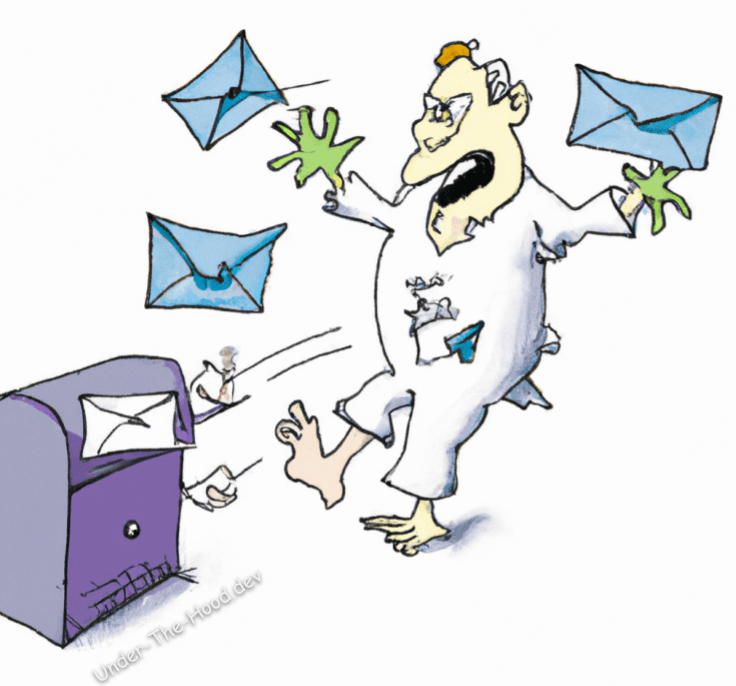As a marketer or business owner, you know that email marketing is an essential component of your overall marketing strategy. However, sending emails is only half the battle. Ensuring that your emails are delivered to your subscribers’ inboxes and engaging them is equally important.
In this article, I will discuss how to maximize email deliverability by reducing your email bounce rate and improving engagement.
Introduction to Email Deliverability
Email deliverability refers to the ability of your emails to reach your subscribers’ inboxes. It is a measure of how successfully you deliver your email campaigns to the intended recipients.

Email arrival is affected by various factors, including email bounce rate, spam complaints, and email engagement.
Understanding Email Bounce Rate
Email bounce rate is the percentage of emails that are not delivered to the recipient’s inbox due to reasons such as invalid email addresses, full mailboxes, or server errors. There are two types of them: hard bounce and soft bounce.
A hard bounce occurs when the email provider cannot deliver an email because the email address is invalid or does not exist.
On the other hand, a soft bounce occurs when the email is returned due to a temporary issue such as a full mailbox or a server error.
Causes of Email Bounce Rate

Invalid Email Addresses, Full Mailboxes, and Server Issues may cause it
Invalid Email Addresses
Invalid email addresses are one of the primary causes. This can occur when subscribers enter incorrect email addresses during the sign-up process, or when email addresses become invalid due to changes in the domain name or email provider.
Full Mailboxes
When a recipient’s mailbox is full, it can cause emails to bounce back to the sender. This can happen when the recipient has not been checking their email regularly, or when they have exceeded their mailbox storage limit.
Server Issues
Sometimes, emails can bounce back due to server issues, such as a temporary outage or maintenance. This can affect both the sender’s and the recipient’s email servers.
Negative Impact of The High Rate
A high email bounce rate can have a negative impact on your email deliverability and overall email marketing efforts. When your emails bounce, it sends a signal to the email providers that your emails are not relevant or valuable to the recipients.
This can result in your emails being marked as spam or blocked by email providers, which can significantly reduce your email deliverability.
Ways to Reduce Email Bounce Rate
Reducing the rate is crucial for improving your email deliverability and maximizing your email marketing efforts. Here are some ways to do it:
Verify Email Addresses
To reduce the number of invalid email addresses, you can verify the email addresses during the sign-up process:
- send a confirmation email to the subscriber’s email address asking them to click on a link to confirm their subscription.
Clean Your Email List
Regularly cleaning your email list can help you remove invalid, inactive, or fake email addresses. Send a re-engagement campaign. Ask subscribers to confirm their subscription or remove inactive subscribers who have not opened your emails for a certain period.
Monitor Your Email Bounce Rate
Regular monitoring can help you identify and address any issues that may be causing high bounce rates.
Use email marketing tools that provide bounce reports and analytics.
Tips for Improving Email Engagement
Improving email engagement is essential for maximizing email deliverability and achieving your email marketing goals. Here are some tips for improving email engagement:
Personalize Your Emails
Personalizing your emails can help you create a more personalized and relevant experience for your subscribers. This can include
- using the subscriber’s name in the subject line or email body
- segmenting your email list based on their interests or behavior
- sending targeted emails.
Use a Clear Call-to-Action
Including a clear call-to-action in your emails can help you encourage subscribers to take the desired action. This can include asking subscribers to click on a link, sign up for a free trial, or make a purchase.
Optimize Your Email Design
Optimizing your email design can help you create visually appealing and engaging emails. This can include:
- using a responsive design that adapts to different devices
- using images and videos to enhance your message
- using white space to improve readability.
Importance of Email List Hygiene
Maintaining a clean and healthy email list is crucial for maximizing email deliverability and achieving your email marketing goals.

Hygiene involves:
- regularly cleaning your email list
- removing invalid or inactive email addresses
- ensuring that you engage your subscribers, and make them happy and interested in your content.
Tools for Monitoring Email Deliverability
Several email marketing tools can help you monitor your email deliverability and improve your email campaigns. These tools provide
- bounce reports
- analytics
- and insights
that can help you identify and address any issues that may be affecting your email placement.
The best tools will depend on your specific needs and preferences. However, here are five popular tools that can help you monitor and improve your email landing rate:
- Senderscore.org: a free tool provided by Return Path. It analyzes your email reputation based on a variety of factors, such as email volume, spam complaints, and bounce rates. It provides a score from 0 to 100, with higher scores indicating better reputation and deliverability rates.
- MX Toolbox: a free tool that allows you to check your email server’s configuration and DNS settings to ensure they are properly configured for email delivery. It also includes a blacklist checker that can help you identify if your domain or IP address has been blacklisted.
- Mail-Tester.com: a free tool that analyzes your email content for spam triggers and provides suggestions for improving your email delivery. It provides a spam score based on various tests, such as SPF and DKIM authentication, and identifies any issues with your email headers.
- Litmus Spam Testing: Litmus Spam Testing is a paid tool that tests your email content against various spam filters and provides a detailed report of any potential issues. It also provides a deliverability score and includes email previews for different devices and email clients.
- GlockApps: GlockApps is a paid tool that provides email acceptance testing, spam testing, and email analytics. It includes a range of features, such as inbox placement testing, DMARC monitoring, and email rendering previews for different devices and email clients.
By using one or more of these tools, you can monitor your email arrival and identify any issues that may be affecting your email deliverability rates.
Best Practices for Maximizing Email Deliverability
To maximize email success rate, here are some best practices to follow:
Follow Email Marketing Regulations
Following email marketing regulations, such as the CAN-SPAM Act, can help you ensure that your emails are compliant and do not violate any laws or regulations.
Test Your Emails
Testing your emails can help you identify any issues with your email campaigns, such as broken links, formatting issues, or spam triggers. You can do the testing by using A/B testing or email preview tools.
Monitor Your Email Engagement
Monitoring your email engagement can help you identify which emails are performing well and which ones need improvement. Use email marketing tools that provide analytics and insights.
Conclusion
Maximizing email deliverability is essential for achieving your email marketing goals and ensuring that your emails are reaching your subscribers’ inboxes.
By reducing your email bounce rate and improving engagement, you can improve your email deliverability and maximize your email marketing efforts.
Remember to maintain a clean and healthy email list, monitor your email success rate, and follow best practices to achieve the best results.

Reducing bounce rates and improving email engagement are critical to any successful email campaign. Which of the tips mentioned in this post have you found to be most effective in improving your email deliverability?